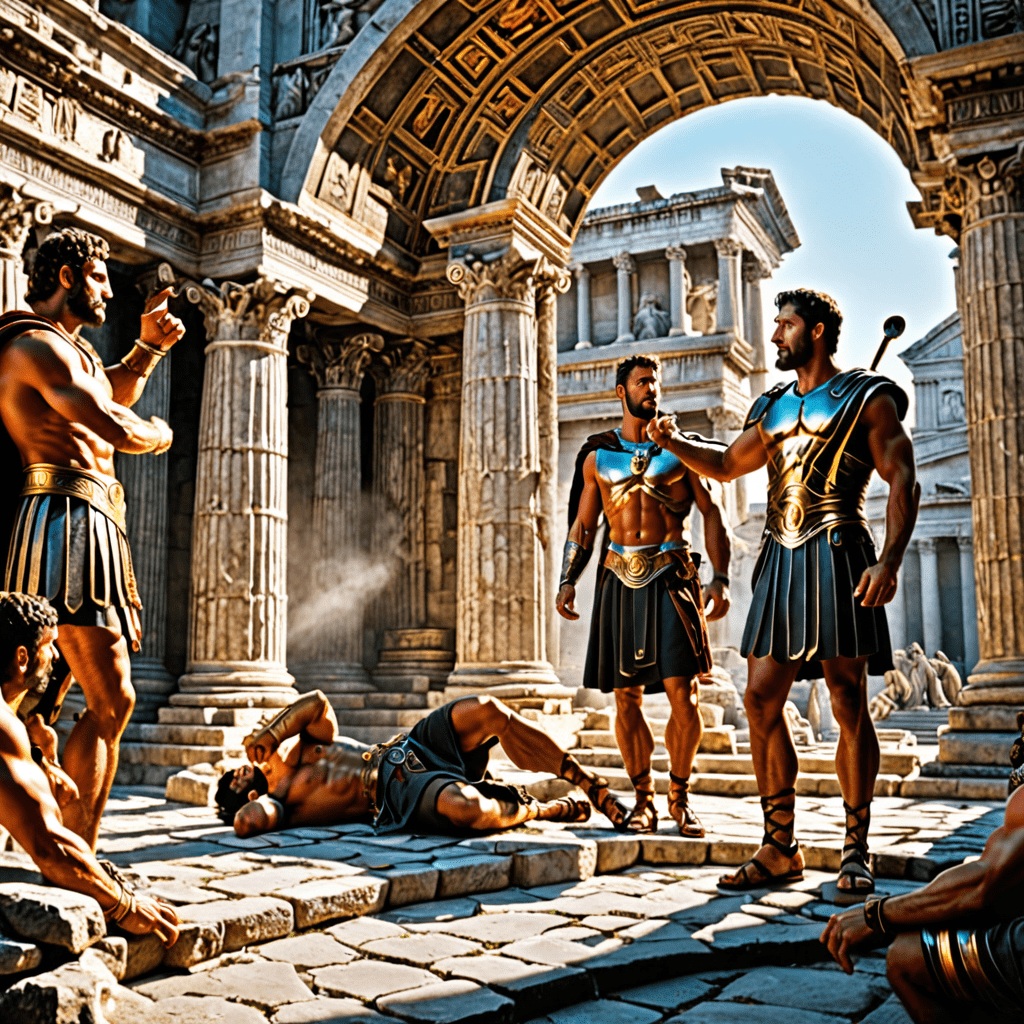Garuda’s Power and Responsibilities: Examining the Bird-Man’s Moral Compass
I. Introduction
In the vast tapestry of mythology, few figures are as compelling and multifaceted as Garuda, the majestic bird-man. Revered in both Hindu and Buddhist traditions, Garuda embodies the duality of power and responsibility. This article aims to explore the significance of Garuda across various cultures and delve into the moral compass that guides this revered figure.
II. The Mythological Background of Garuda
Garuda’s origins can be traced back to ancient Indian texts, where he is described as the king of birds and a powerful deity. He is often depicted as a colossal eagle with a human body, symbolizing the harmonious blend of the earthly and the divine.
A. Origins and significance in Hindu and Buddhist traditions
In Hindu mythology, Garuda is known as the mount (vahana) of Lord Vishnu, playing a crucial role in various narratives. In Buddhist texts, he is portrayed as a protector of the Buddha and a figure of immense strength. His significance transcends religion, symbolizing the universal struggle against ignorance and evil.
B. Garuda’s representation as a deity and a creature
Garuda is both a divine figure and a creature of nature, embodying the characteristics of both. As a deity, he represents power, speed, and honor. As a creature, he is a reminder of the beauty and ferocity of the natural world.
C. The symbolic meaning of the bird-man figure
The bird-man figure of Garuda symbolizes liberation and transcendence. His ability to soar through the skies signifies the pursuit of knowledge and spiritual awakening, while his fierce nature represents the fight against oppression and injustice.
III. Powers and Abilities of Garuda
Garuda is endowed with extraordinary powers and abilities that set him apart from other mythological beings.
A. Physical attributes and divine powers
- Massive wingspan allowing for incredible flight.
- Strength that surpasses that of any other creature.
- Ability to change size and shape at will.
B. Role as a vehicle for Vishnu and symbol of strength
As the vehicle of Vishnu, Garuda holds immense importance in Hindu cosmology. He not only transports Vishnu but also symbolizes the strength and valor required to uphold dharma.
C. Garuda’s abilities in combat and protection
Garuda is known for his prowess in battle, often depicted as a fierce protector of the gods. His abilities include:
- Defeating serpents and demons, symbolizing the victory of good over evil.
- Using his sharp beak and talons to protect his devotees.
- Possessing knowledge of medicinal herbs and healing powers.
IV. The Moral Responsibilities of Garuda
With great power comes great responsibility, and Garuda is no exception. His moral responsibilities are central to his character in various mythological narratives.
A. The concept of duty in mythology
In many mythologies, the concept of duty (dharma) is paramount. Garuda exemplifies this by consistently aligning his actions with the principles of righteousness, often putting the welfare of others before his own interests.
B. Garuda’s role as a protector of dharma
Garuda’s primary role is that of a protector of dharma. He fiercely defends the divine order against chaos and evil, embodying the ideals of justice and morality.
C. Ethical dilemmas faced by Garuda in mythological narratives
Garuda’s stories often present him with ethical dilemmas, such as:
- Choosing between loyalty to his mother, who is a serpent, and his duty to Vishnu.
- Deciding how to respond to threats against the divine order.
These dilemmas highlight the complexities of his moral compass and the weight of his responsibilities.
V. Garuda’s Relationships with Other Deities
The dynamics between Garuda and other deities offer valuable insights into his character and moral framework.
A. Dynamics with Vishnu and his significance
Garuda’s relationship with Vishnu is one of mutual respect and devotion. As Vishnu’s mount, Garuda plays a vital role in the preservation of cosmic order, illustrating the importance of collaboration between powerful beings.
B. Interaction with other beings: gods, demons, and humans
Garuda interacts with various beings across the mythological spectrum. His encounters with demons often showcase his protective nature, while his relationships with humans reflect his role as a guide and mentor.
C. Lessons learned from these relationships
Through his interactions, Garuda teaches lessons of loyalty, courage, and the importance of standing against injustice.
VI. Garuda in Contemporary Culture
Garuda’s influence extends beyond ancient texts into contemporary culture, where he is represented in various forms.
A. Representation in modern media and literature
In modern literature and media, Garuda is often depicted as a symbol of strength and heroism, appearing in films, animations, and literary works that draw on his mythological roots.
B. Symbol of nationalism and identity in various regions
In countries like Indonesia, Garuda serves as a national emblem, representing freedom and the spirit of the nation. His image is used in various contexts, embodying both cultural pride and identity.
C. The evolving perception of Garuda’s moral authority
As societies evolve, so does the perception of Garuda’s moral authority. He is increasingly viewed as a figure representing the balance between power and responsibility, encouraging a deeper reflection on ethical leadership.
VII. Comparative Analysis: Garuda and Other Mythical Figures
Garuda’s unique characteristics can be compared with other bird-like deities from different cultures.
A. Similarities and differences with other bird-like deities
Many cultures have bird-like deities, such as the Egyptian god Horus or the Native American Thunderbird. While all embody strength and protection, Garuda’s moral complexities set him apart.
B. Insights from global mythology on power and morality
Global mythology often explores themes of power and morality, revealing the universal struggle to balance these forces. Garuda’s narratives offer insights into how different cultures interpret these themes.
C. The impact of cultural context on interpretations of moral responsibility
Cultural context significantly shapes the interpretation of Garuda’s moral responsibilities, highlighting the diverse ways societies approach concepts of duty and ethical behavior.
VIII. Conclusion
In summary, Garuda embodies a powerful figure whose moral compass guides him through complex narratives of duty, strength, and protection. His lessons on ethical responsibility remain relevant in today’s world, reminding us of the importance of balancing power with moral integrity. As we reflect on Garuda’s journey, we are encouraged to consider our own responsibilities in the pursuit of justice and righteousness.



